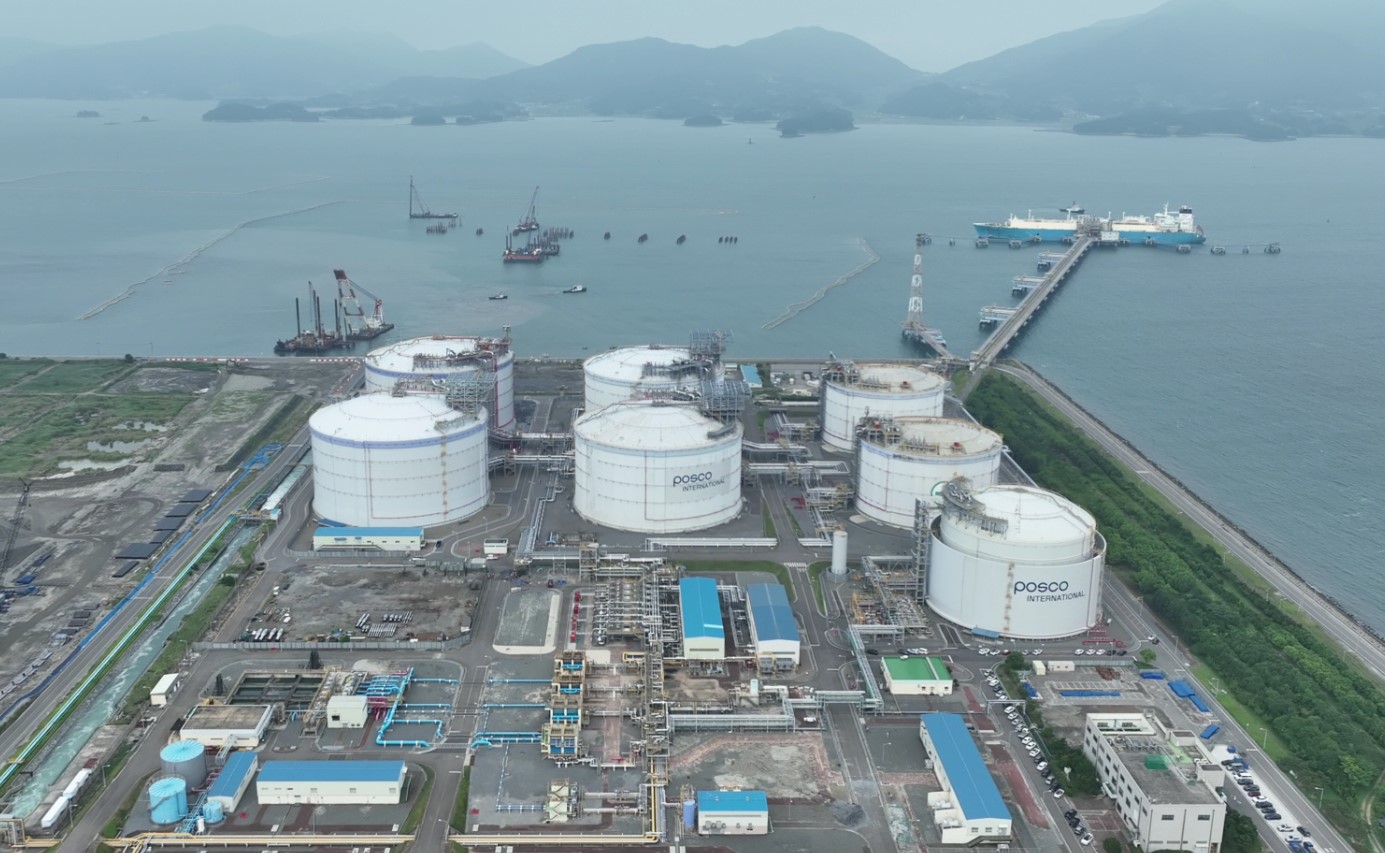South Korea’s Posco International, a unit of steel giant Posco, has added the sixth liquefied natural gas tank at its first Gwangyang LNG import terminal.
With this, Posco International, which merged with Posco Energy last year, has wrapped up the construction of the first Gwangyang LNG terminal in South Jeolla province, it said in a statement on Tuesday.
Back in January 2021, Posco Energy started work on the sixth LNG storage tank with a capacity of 200,000 cbm and worth about 143.7 billion won.
The first Gwangyang LNG terminal now has a total storage capacity of 930,000 cbm in six tanks.
According to Posco International, the first and the second tanks started operation in 2005 followed by the third in October 2010 and the fourth in May 2013. The fifth tank started commercial operations in December 2019.
The fifth and the sixth LNG tank feature Posco’s high manganese steel.
Besides LNG tanks, the terminal also features an LPG tank, a jetty, and other regasification and additional facilities.
Posco International said the construction of the first Gwangyang LNG terminal took 20 years and costed 1.45 trillion won ($1.05 billion).
The terminal supplies natural gas for power generation and industrial processes, and it also provides services for LNG imported by companies such as Posco, S-Oil, and SK E&S.
In addition to these six LNG tanks, Posco International started building last year two new LNG tanks for the second Gwangyang LNG terminal.
The project includes the construction of two LNG storage tanks with a capacity of 200,000 cbm on a site near the first Gwangyang LNG terminal.
Following completion of this project, Posco International said it will have a total LNG storage capacity of 1,330,000 cbm by 2026.
This is enough to supply heating gas for the entire county for 40 days, the firm said.
The Gwangyang LNG terminal is South Korea’s first private LNG terminal besides the Kogas-owned facilities.
Kogas operates 77 LNG storage tanks at five LNG import terminals in South Korea.
The large terminals include Incheon, Pyeongtaek, Tongyeong, and Samcheok, while the firm has a small-scale regasification terminal at the Aewol port on Jeju island as well.
In addition to these facilities, the firm is building a large terminal in the western port city of Dangjin and expects to launch the first phase in 2025.
In May, Kogas completed lifting the roof on the first 270,000-cbm tank at its Dangjin LNG import facility.

